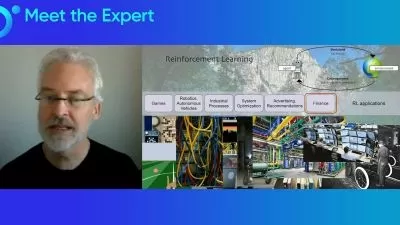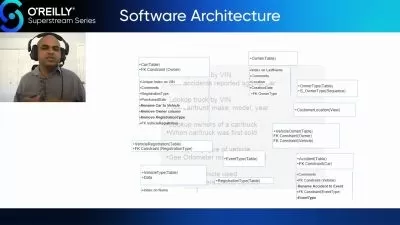EA Diagrams: The Enterprise Architect with Archi 5.2 part 1
4:02:35
Description
Unlocking Value Through Enterprise Architecture Modeling with standard 3.2
What You'll Learn?
- Learn how to create flexible and amazing enterprise architecture diagrams
- Learn the fundamentals of enterprise and enterprise architecture
- Learn how to create enterprise vision, strategy and business diagrams
- Learn how to analyze real world cases to create your diagrams
Who is this for?
What You Need to Know?
More details
DescriptionThis is the full course for getting you prepared as a Master of Enteprise Architecture Modeling. Also you are going to get ready for implementing the knowledge into your real cases in the real world.
With this course you will be able to handle the different concepts of enterprise architecture. Also you are going to be able to handle real cases in the world to create your diagrams. This means that you are going to handle not only the concepts but also how to apply them in real cases.
During this course we are going go get our hands dirty on the language, how we want to use each element, and how each element relates to other elements, and what this mean.
You also are going to be able to handle complex cases and mapped them into the different views and diagrams of the language.
Also during this course we are going to implement several practical cases in order to apply the concepts of the framework into real life. The output will be outstanding diagrams that are going to mean something to stakeholders.
As instructor I have 10 years of experience teaching different courses about Enterprise Architecture.
The main objectives of this course are:
Dive deep into the world of enterprise architecture modeling and learn how to create visually appealing and informative diagrams that effectively communicate your organization's structure and processes.
This course will equip you with the knowledge and skills needed to design flexible and adaptable enterprise architectures that can evolve with your business needs.
Explore a variety of modeling techniques and tools to create diagrams that are not only visually appealing but also provide valuable insights into your organization's operations.
Learn how to create diagrams that are easy to understand and maintain, even as your organization's needs change.
Discover techniques for designing flexible and adaptable architectures that can accommodate future growth and innovation.
Explore tools and methods for creating diagrams that are easy to modify and update, ensuring that your documentation remains relevant and up-to-date.
Who this course is for:
- Enterprise architects
- Software architects
- Project Managers
- Technology architects
- Business process architects
- Business architects
- Software developers
This is the full course for getting you prepared as a Master of Enteprise Architecture Modeling. Also you are going to get ready for implementing the knowledge into your real cases in the real world.
With this course you will be able to handle the different concepts of enterprise architecture. Also you are going to be able to handle real cases in the world to create your diagrams. This means that you are going to handle not only the concepts but also how to apply them in real cases.
During this course we are going go get our hands dirty on the language, how we want to use each element, and how each element relates to other elements, and what this mean.
You also are going to be able to handle complex cases and mapped them into the different views and diagrams of the language.
Also during this course we are going to implement several practical cases in order to apply the concepts of the framework into real life. The output will be outstanding diagrams that are going to mean something to stakeholders.
As instructor I have 10 years of experience teaching different courses about Enterprise Architecture.
The main objectives of this course are:
Dive deep into the world of enterprise architecture modeling and learn how to create visually appealing and informative diagrams that effectively communicate your organization's structure and processes.
This course will equip you with the knowledge and skills needed to design flexible and adaptable enterprise architectures that can evolve with your business needs.
Explore a variety of modeling techniques and tools to create diagrams that are not only visually appealing but also provide valuable insights into your organization's operations.
Learn how to create diagrams that are easy to understand and maintain, even as your organization's needs change.
Discover techniques for designing flexible and adaptable architectures that can accommodate future growth and innovation.
Explore tools and methods for creating diagrams that are easy to modify and update, ensuring that your documentation remains relevant and up-to-date.
Who this course is for:
- Enterprise architects
- Software architects
- Project Managers
- Technology architects
- Business process architects
- Business architects
- Software developers
User Reviews
Rating

Udemy
View courses Udemy- language english
- Training sessions 58
- duration 4:02:35
- Release Date 2024/11/22







